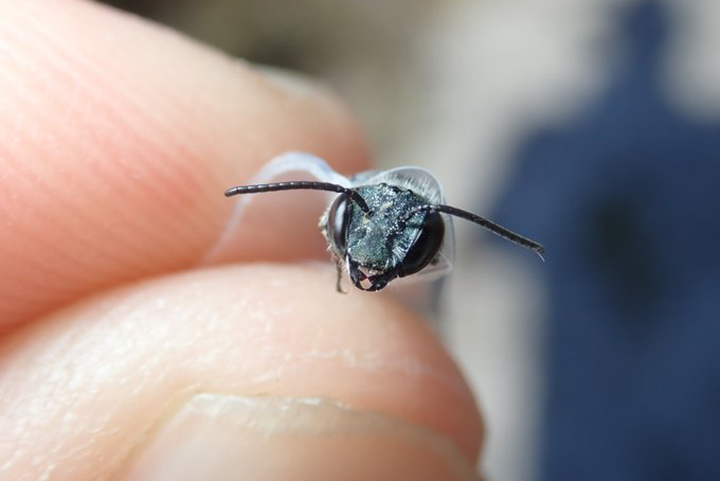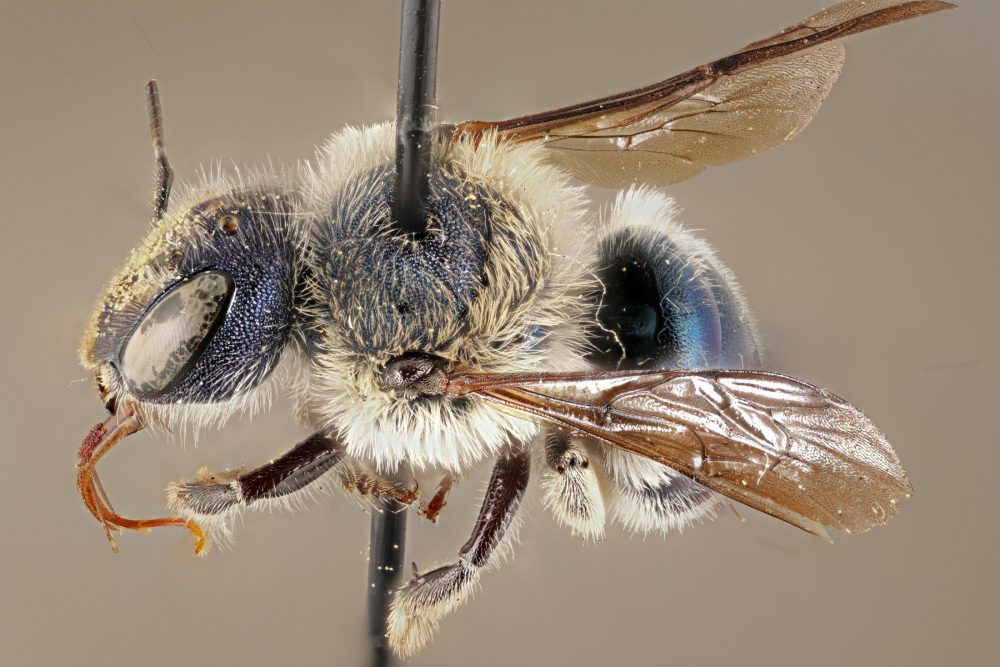Insect researchers are buzzing in Florida this week over the rediscovery of the blue bee, a rare little creature thought to have gone extinct shortly after it was discovered.

Researchers in Florida say the blue calamintha bee (Osmia calaminthae) has been spotted for the first time since 2016, stoking hopes that it might be possible to save the insect from extinction.
Blue calamintha bees nest alone and feed on Ashe’s Calamint, a threatened plant found only in Florida. The bees were first recorded in 2011 and dropped out of sight a few years later, despite calls to protect their threatened habitat in central Florida.
Researcher Chase Kimmel ventured back to the patch of pine forest where the bee was first discovered to look for it this spring, just to see if it was still alive.
“I was open to the possibility that we may not find the bee at all,” Kimmel said in a release from the Florida Museum of Natural History, where he’s conducting his post-doctoral research.

Get breaking National news
“When we spotted it in the field it was really exciting,” Kimmel said.
Researchers at the museum have launched a two-year study to learn more about the bee’s numbers and habits, particularly since it can only be found in one tiny tract of forest.
They know that the bee nests alone but they’ve never actually found one of its nests. They’ve also learned that it likes to bob its head around on top of flowers to collect as much pollen as possible on its tiny hairs.
“We’re trying to fill in a lot of gaps that were not previously known,” Kimmel said. “There’s a lot of neat discoveries that can still occur.”
The bee is a hyper-local species that likely evolved around an isolated patch of sand dunes along the central Florida ridge, according to Jaret Daniels, Kimmel’s adviser at the museum. They hope to figure out exactly how many of the bees live in the area.
“Having this bee in more abundance than we expected is really encouraging for its survival,” Kimmel told Weather.com.
The two researchers are doing their best to work through the COVID-19 lockdowns so they can monitor the bee over the next year.
If nothing else, they hope their work will answer a key question for the critically threatened bee: is it to be, or not to be?









Comments